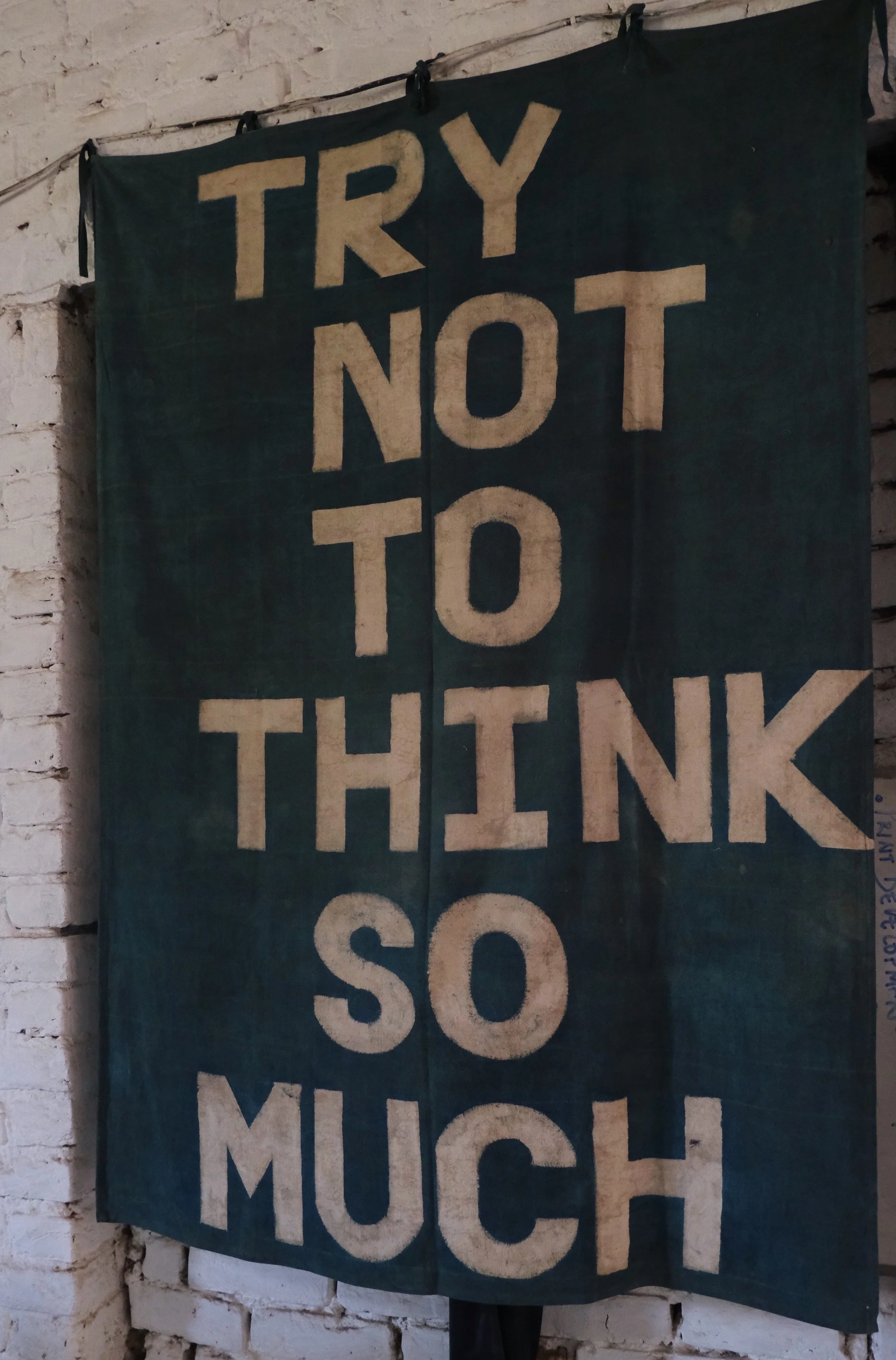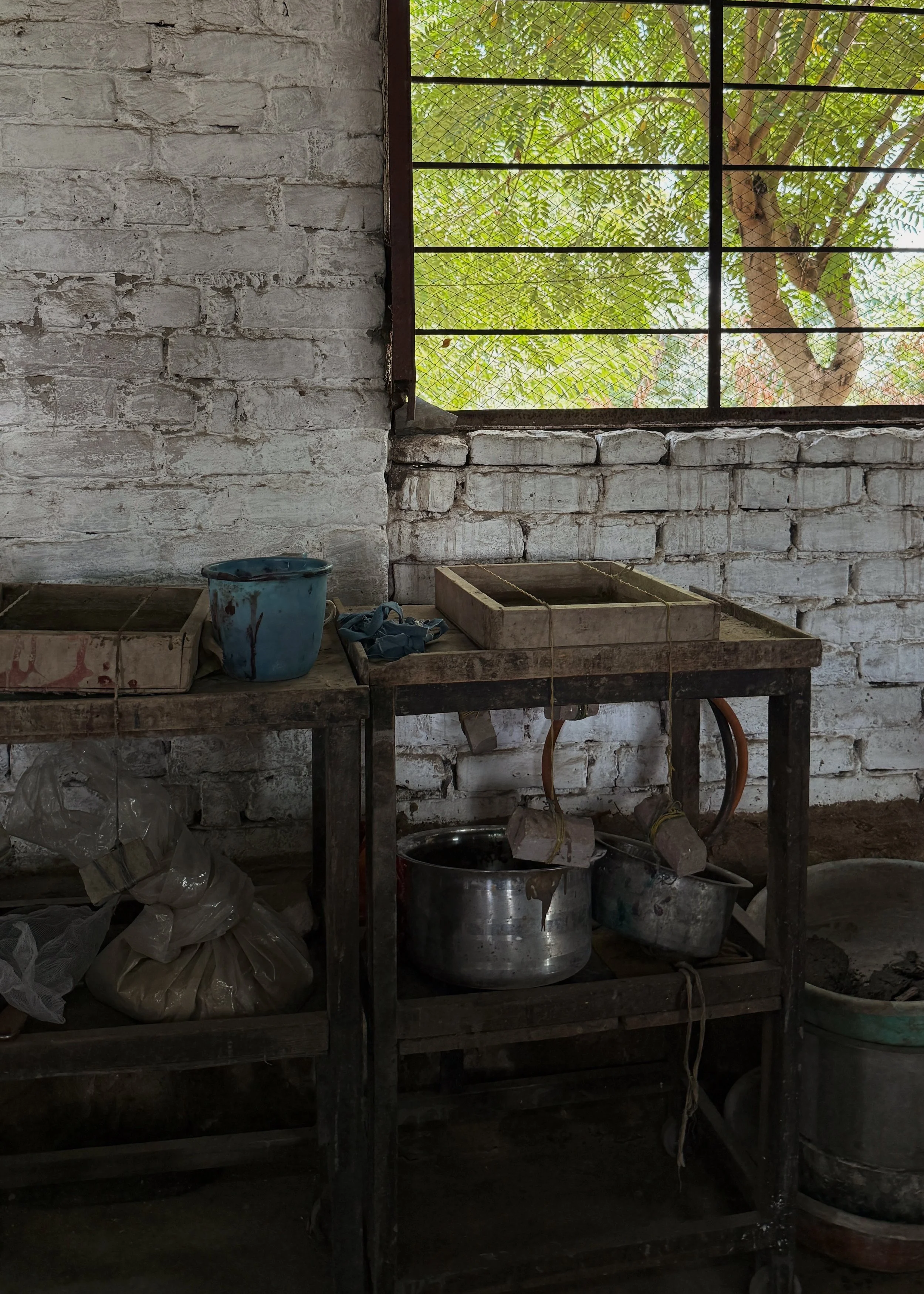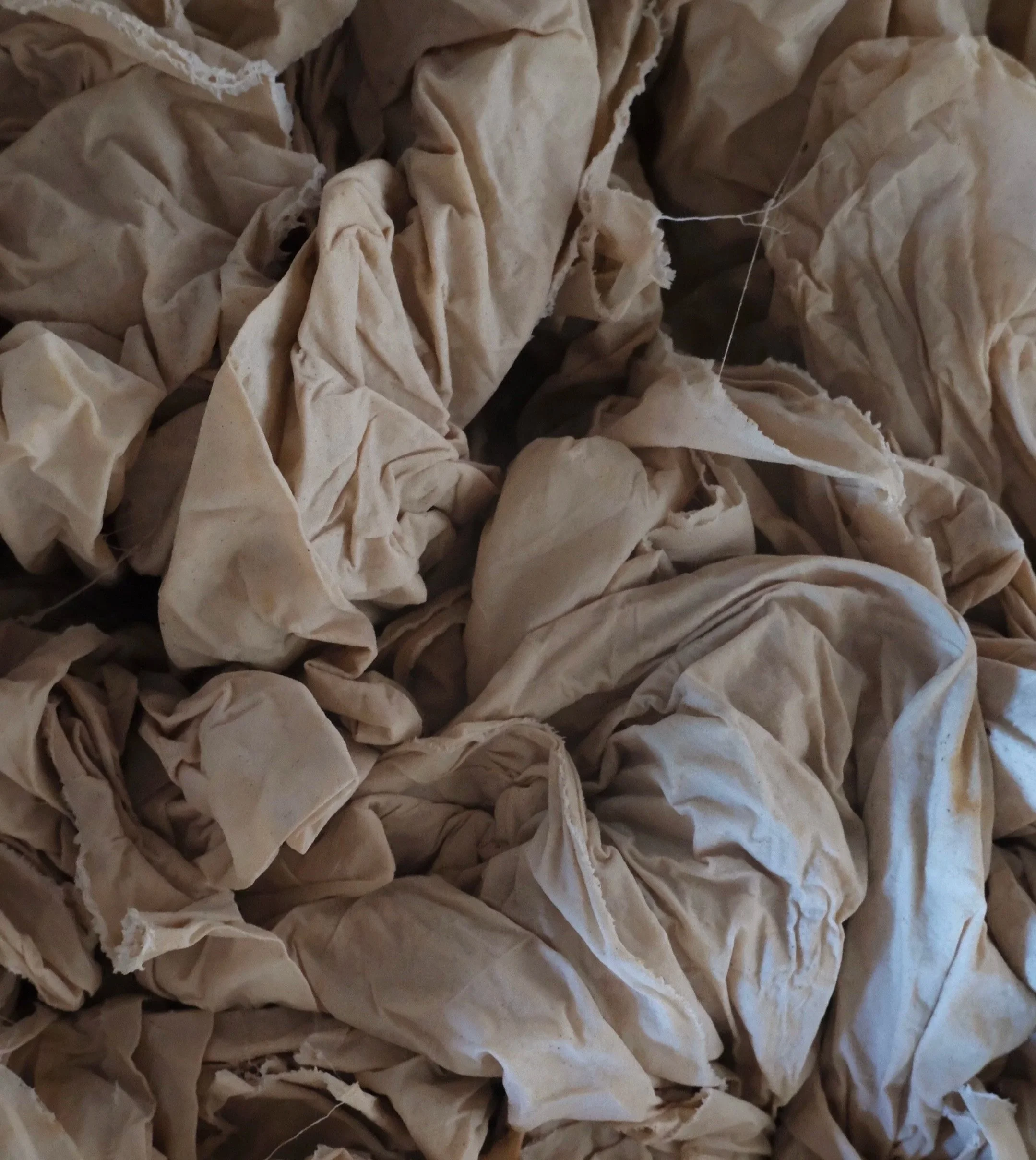The Wabisabi Project
Wabisabi — Finding beauty within imperfections
20th November 2025
Wabisabi. This does not mean compromising on quality, as our intention is to make quality timeless pieces, in collaboration with nature. Timeless in the sense that each motif stamped enlivens ancient wisdom. And every piece, whether that be a jajam, piece of clothing or simple sheet can be passed down over many generations. Or shared within the local community. “The more time you take to make your things, the longer it will last” – Avinash.
Textiles are not an isolated craft. The craft itself is not separate from intergenerational wisdom and community. As Avinash explained the traditional processes for block printing and natural dying, I could feel the Vedic wisdom woven within every step. Natures intelligence woven within every step. There is a reason Maharishi Mahesh Yogi would share the dipping and fading of the cloth analogy (of course). From scouring the fabric, a process of removing impurities, to literally beating the cloth on stone breaking apart any remaining starches and bonds that would prevent the integration of dye and fiber, metaphor and esoteric philosophy is woven within every step.
It takes around two weeks just to prepare a cloth for block printing and dyeing here. Though this two week process could be reduced to two hours by using hydrogen peroxide (bleach) to burn the fibers reducing impurities. And also the strength of the fabric. And it’s toxic. But this is a whole other conversation as there are many complex socioeconomic considerations here.
Back to not being an isolated craft, every community contributes to the whole. No one, can exist without the other. And in this way, no one takes ownership of the art. No one claims the process as their own. One piece of fabric will pass through many communities, many hands, as it comes to life. Each community holds its own indigenous wisdom and processes, working with nature to support and enliven the processes. Bagru, where Wabisabi Project is based, is a hot dry climate and so good for dying—dipping and fading. Whereas weaving is better practiced in humid climates. “If you tried to weave here the cotton would just snap and shred, it’s too dry here for weaving”.
Every pigment, every ingredient used, enlivens the five elements and natures intelligence. Madder Root (Mañjiṣṭhā) for example is used medicinally within Āyurveda to purify and cool the blood supporting circulatory and skin health. The modent used, Alum (Phitkārī) is a natural antiseptic. Myrobalan Harda (Harītakī), is a rasāyana, so it nourishes the tissues improving longevity and vitality and it also supports good digestion. Black pigment comes from fermented iron. Everything is intentional. Everything is in alignment with nature and can be locally sourced. Here in Bagru they use the bacteria and enzymes in cow dung to help break down starch within the cotton (a step within the scouring/preparation process) so that dyes will be readily absorbed producing vibrant, pigmented fabrics. Whereas in other regions, they might use camel or goat dung. Whatever is in abundance and easily accessible.
Master dyers work intuitively, not through the mind. Nothing is exact, everything is dynamic—if one variable changes, everything changes. The artisans don’t wear gloves whilst stirring the cotton cloth in deep blue indigo blue vats. These go around twelve feet into the ground by the way. But wearing plastic gloves, would dampen their connection to the fabric. To the plants. And in the case of Indigo, naturally, Indigo or Nīla is cooling. The block printing sheds although open, are hot… to say the least. It felt so nourishing and calming gliding my hands through the deep Indigo water. Nīla is also used in Āyurveda to cleanse the blood.
The Wabisabi Project is run by a small local family who work to rediscover lost wisdom and techniques. They employ and support a small, happy team of craftsman who work with nature and intention. Instead of focusing on the industrialisation of this ancient craft (although there is definitely awareness and knowledge shared on this—and how these artificial processes effect the environment, community, the individual who wears the cloth, the longevity of the cloth etc) they choose to enliven and revive indigenous practices. A deeply inspiring team and ‘mission’. Mission feels to sharp of a word, as what is unfolding here is soft, slow and aligned… but I can’t think of another one.
Thank you to Terra for sitting beside me at dinner, and then inviting me along to have this experience. Nature always gives us what we need, and too often we can find ourselves in the right place, at the right time. And of course, thank you for having us Avinash and extended family. A deeply inspiring experience. I look forward to following the journey and evolution of Wabisabi project.
Oh and heres their website: https://wabisabiproject.com/
With love & Jai Guru Deva,
Em






